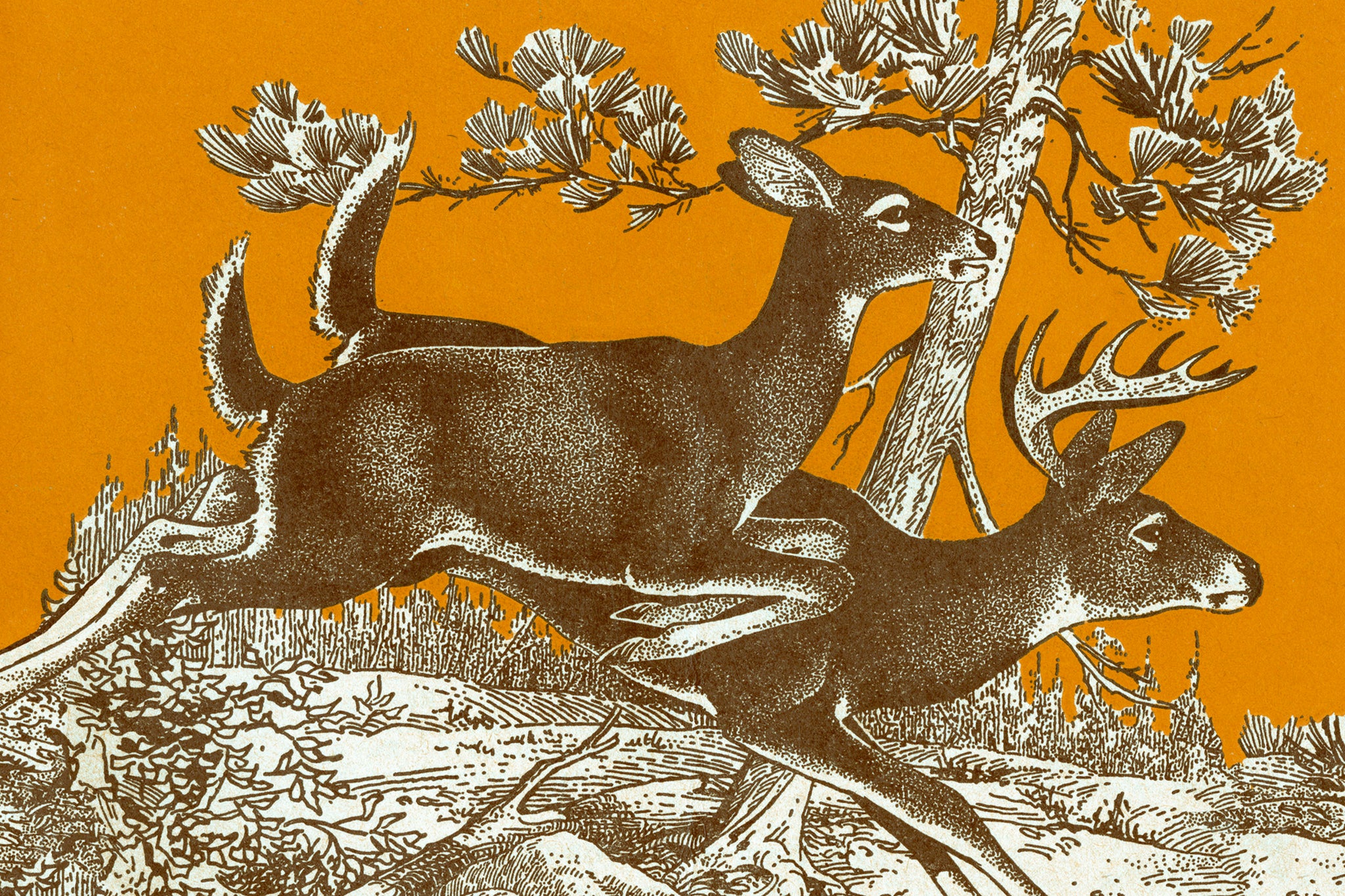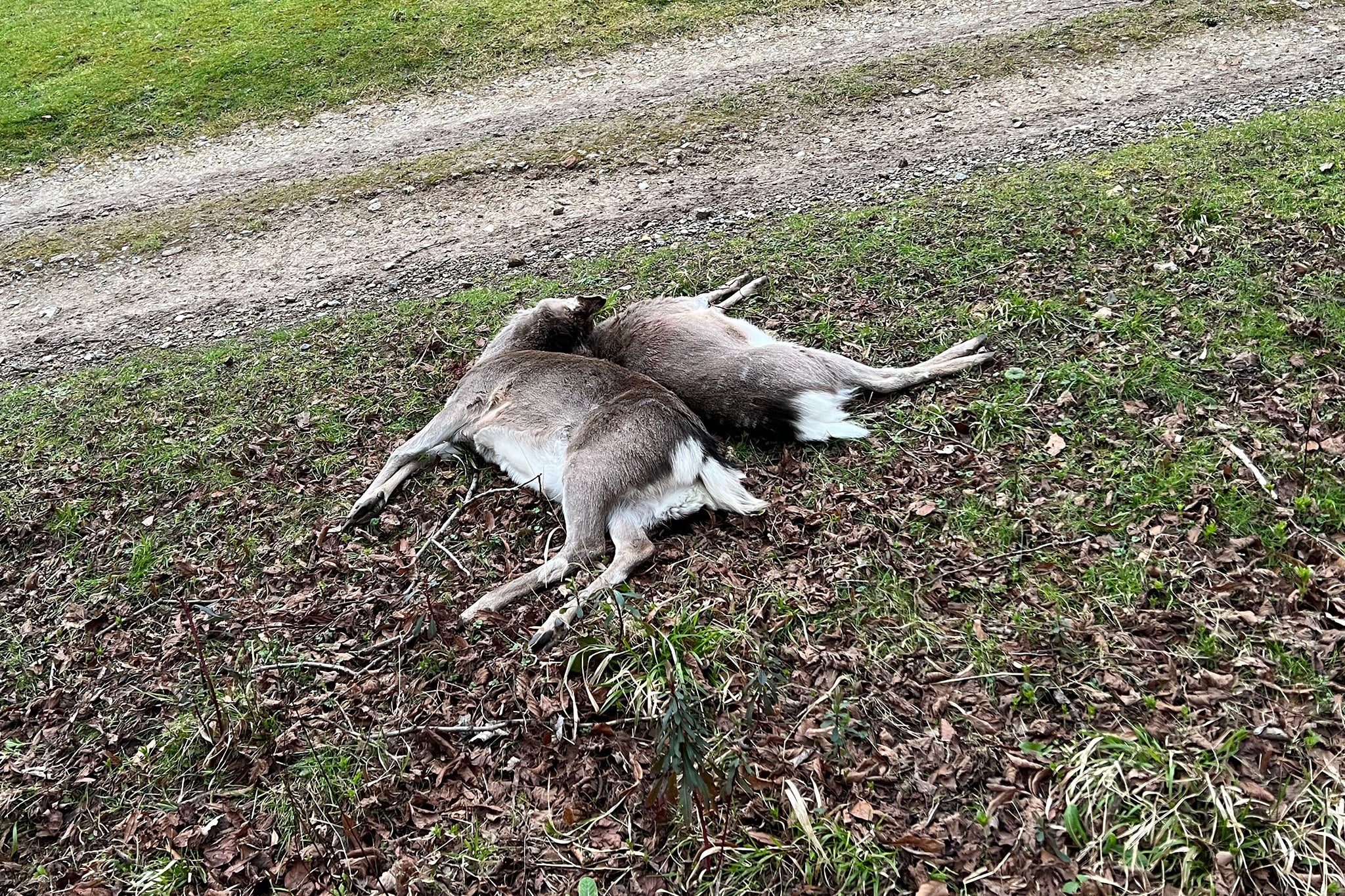I watched a deer die for my dinner – now I think we could all benefit from hunting Bambi
Inspired to learn more about the food she consumes, Kate Ng embarked upon a deer stalk – a controversial but necessary means to control a population of animals creating environmental chaos (while being absolutely delicious)


I am about to follow a very tall man on a deer stalk. Depending on our luck, we may shoot one or two dead. “You’re not squeamish, are you?” asks the man in question. His name is Brad Smith, and he’s the gamekeeper at the Culden Faw Estate in Hambleden, Henley-on-Thames. We are at The Stag & Huntsman, a nearby country pub. He towers an entire head and shoulders above me.
I’ve never watched a deer be shot, except on TV. In the days leading up to my stalk, I think of an episode of the late chef Anthony Bourdain’s excellent travel series, Parts Unknown, in which he went stag-stalking with journalist and critic AA Gill. In the show, Gill tells Bourdain that he must be “blooded” after he successfully hunts his first red stag, and proceeds to smear blood and guts all over the American’s face. I wonder, briefly, if Smith will do the same to me.
When one mentions “deer stalking”, this is the kind of thing that comes to mind. For most people it might conjure visions of members of the royal family, or wealthy men staying in sprawling manors in the Scottish Highlands, hunting down these majestic animals to put their heads on walls and their bodies on plates. While it’s true that this particular type of deer stalking is a preserve of the elite – it can cost thousands to organise a game-hunting party with the goal of shooting a stag – the reality of shooting venison is much less snooty. Everyone I speak to who hunts regularly is working-class, many growing up on farms and shooting game since they were young.
Smith, who is from Gloucestershire, gives me a wry smile when I mention the common perception that deer stalking is posh. “I’m very far from posh,” he tells me in his rural, West Country accent. “I’m a farmer’s boy!”
The reason for my trip to the quiet, idyllic Hambleden is that I am a firm believer in understanding where our food comes from. I’ve spent the last year learning about venison and deer populations in the UK, and have come to the conclusion that eating venison is the most ethical and sustainable way to eat meat. But I also want to know more about these practices – to, in a sense, get my hands dirty.
In ultra-processed Britain, we don’t tend to know what we’re consuming when it comes to meat. We like to eat nuggets, sausages and patties, all made up of animal parts manipulated far beyond their original form. There’s nothing inherently wrong with this type of food – I am partial to a box of chicken nuggets, and nothing beats a good beefburger. But what I do find extremely worrying is the growing distance between our consumption of meat products and the animals they come from. Surely if you’ve made the choice to eat meat, as I have, then you should know and care about what has happened to the creature you’re consuming.

A 2017 poll by The Prince’s Countryside Fund found that one in eight young people aged 18 to 24 had never seen a real-life cow. There hasn’t been a similar poll conducted since, but I’d wager this figure may have grown. Anecdotally, so many more of us seem to have become averse to handling or even seeing raw meat, let alone the animal it comes from.
The discomfort people have about consuming meat has led to many important conversations and changes in animal welfare. It has undoubtedly been crucial in getting better conditions for farmed animals. But when it comes to venison, these wild animals have the best life they could possibly ask for – wide, open spaces, the freedom to roam the British countryside without much human interaction, and a feast of food to eat.
That, though, has become an issue. Deer, in fact, have so much to eat that they are destroying their own habitat. And most people, particularly those of us who live in cities, don’t see the scale of the environmental damage that out-of-control deer populations wreak. David Holliday, the co-founder of Sika Inns, the pub group that manages The Stag & Huntsman, explains that deer consume everything they can reach. “Saplings have no chance to grow because the deer will obliterate them, so they stop trees from growing and maturing,” he says. “They graze low-growing plants. They get into farmers’ crops and eat those as well. They are a catastrophe for the local environment.”
Last year, I visited the Riverford organic farm in Devon, which is run by Guy Singh-Watson. He told me of a crop of sweetheart cabbages they had one year that were completely spoiled after a herd of deer got into them. “They ate all the tops of the cabbages, just the tops,” he exclaimed. “Ruined!!”
Deer populations are usually kept under control through culling – a necessary evil because deer have no natural predators in the UK. But during the Covid pandemic, when gamekeepers and hunters were ordered to stay at home like everyone else, the numbers grew unchecked and have been unsustainable since. Long ago, apex predators such as wolves or lynx would have kept the grazing herds in check – but those days are long gone. Humans had exterminated wolves in the UK by the 18th century, which had the unexpected effect of throwing the food chain completely out of whack.
It might be a difficult pill to swallow, but it falls to us to keep nature in balance. If deer are allowed to roam and graze uncontrolled, they make growing and maintaining woodlands impossible. In some cases, they will even overgraze an area to such an extent that they are left with absolutely no food, thus starving themselves to death.

Chef Kevin Tickle, who runs the Heft inn and restaurant in Cumbria, has been hunting since he was young and says that venison used to be a staple of the Cumbrian diet. “We used to have it for dinner every week when I was a kid,” he recalls. Whether Bambi is to blame, or simply the growing awareness around animal welfare and sustainability, venison consumption has since plummeted. Tickle isn’t sure why, but he laments that people are missing out on an ingredient that is actually incredibly good for them – venison is leaner and has less fat than beef, and has more protein. “It’s a beautiful meat to cook with, very versatile – and if you cook it properly, it is delicious,” he says.
Holliday agrees, adding: “Half the UK population has got ailments that could potentially be fixed with a healthier diet, and venison is a much healthier choice than most meats... all that stuff is great, but the fact is that it is absolutely bananas delicious [too].”
I think about all of this as I follow Smith as quietly as possible through the woods. He instructs me to stay close behind him. Every few steps, he stops to look through his thermal imaging binoculars. Following his line of sight, I can just about make out the flicking of ears in the distance, or a glimpse of a white tail hopping away from us.
From small muntjac deer, an invasive species that hails from China, to larger fallow and red deer, the woodland is crawling with animals today. Eventually, Smith sets his eyes on a pair of sika deer, a mother and fawn, who he says escaped from the nearby deer park. Immediately, and inevitably, I think of Bambi.
We stop and he starts setting up a tripod to stabilise his rifle, which looks nearly as tall as me. I feel a tickle in my throat. Oh no. Before I know it, I cough. Smith shoots me a look. I’ve ruined it, I think. When we turn back to the deer, though, they’re still there. Quickly, Smith rests the rifle on his tripod and takes aim. The BANG! winds me as the first deer falls to the ground within milliseconds of the sound. There is a brief pause to see if the second deer is still around, too. She is. BANG!
I’m asked again if I’m squeamish. We walk a few metres towards the fallen deer. The first, a fawn that’s nearly adult-sized, lies twitching on the ground, blood soaking in. An eyeball bulges. “We have to shoot them in the head,” Smith tells me. “It’s dead before you even hear the sound of the shot, so it’s more humane. And game dealers nowadays won’t take any meat if there’s a shot in them, so this is cleaner.”

Thankfully, I am spared the experience of being blooded. Instead, Smith and I take the deer back to his cutting room, where he guts, hangs and skins them. I follow him as he carries another deer, which had already been hanging in the room, over to the restaurant. I ask him if he remembers the first time he shot one of these animals. He pauses for a moment. “I do... but I’m probably worse now, you know? In terms of sentimentality.”
“I don’t like doing this,” he continues, gesturing towards the fresh meat. “It’s part of my job, but I don’t do it for fun. I’m a keeper of the land. I look after these grounds, and part of that is making sure these animals don’t destroy it, which they do if there are too many of them.”
As I dine on venison that very evening, I think about how this animal came to be on my plate. What a privilege it was to have seen the entirety of the process from field to plate. My respect for these animals has only grown. And for the people keeping them in check.
Join our commenting forum
Join thought-provoking conversations, follow other Independent readers and see their replies
Comments
Bookmark popover
Removed from bookmarks